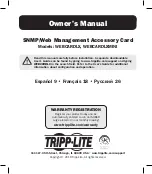
Figure 11.1 shows the three MLS components contained in a single switch chassis, such as that of a Cisco
Catalyst 5000 or 6000 family switch.
Figure 11.1: The MLS components using an internal route processor in an MLS switch.
The Cisco 5000 and 6000 families of switches can use multiple internal route processors, such as the
following:
NetFlow Feature Card (NFFC)
•
NetFlow Feature Card II (NFFC II)
•
Route Switch Module (RSM)
•
Route Switch Feature Card (RSFC)
•
Multilayer Switch Feature Card (MSFC)
•
Multilayer Switching Module (MSM)
•
Note The NFFC or NFFC II must be used as a daughtercard of the Supervisor Engine III. You can also use the
Supervisor IIG or IIIG card with Supervisor Engine software release 4.1 or later, which provides the
functionality of the NFFC without using an NFFC card. Newer Catalyst models have the MLS
functionality built into the switch. These switches—known as Layer 3 (L3) switches—are the Cisco
Catalyst 4908G−L3, the Cisco Catalyst 2926G−L3, and the Cisco Catalyst 2948G−L3. The RSM or
RSFC can be used in the Catalyst 5000 family, and an MSM or MSFC can be used in the Catalyst 6000
family.
You can use an external router instead of an internal route processor to resolve the initial packet routing
information. You must use an external router that supports MLS. Figure 11.2 shows an external router
providing MLS route resolution functionality for the MLS−SE (switch). MLS support is included in enterprise
routers with the Cisco IOS version 11.3(2)WA4(4) or later. These routers include the following:
Figure 11.2: The MLS switch using an external router.
Cisco 3600 series
•
Cisco 4500 series
•
Cisco 4700 series
•
Cisco 7200 series
•
Cisco 7500 series
•
Cisco 8500 Gigabit Switch Router series
•
In order to understand the MLS process better, we need to examine how the data packets are forwarded in an
MLS environment.
229
















































